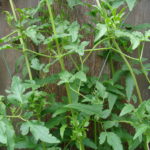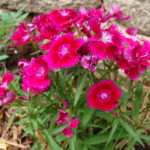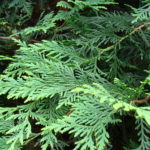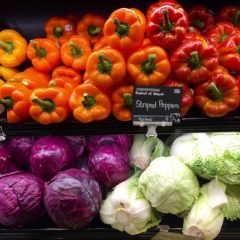I love summer! Here in Minnesota, the world explodes in green. You can practically hear plants growing, and each morning, you can see that some have gained inches overnight.
I have lots of gardens in my yard; some are in the shade, some are sunny, and some are tucked into little corners that don’t get much attention. I like to walk around my house and check what’s been growing, what’s flowering, and what needs a little weeding. The other day, as I was checking out the green, I began to take stock of how many plants
growing in my yard are actually Chinese herbs. I was surprised to find that in my modest little yard I found about two dozen plants that appear in the Chinese Materia Medica—the book of Chinese herbs. Most of the plants need to be processed in some way and should not be ingested right out of the garden; however, there are a few that you can. For easy explanations on any of the Chinese medical terminology, check out Simple Steps: The Chinese Way to Better Health.
Here is a sampling of what I found:
- Mint. This cool herb can be picked, dried, and used as a seasoning or drunk as a tea. It’s good for when you have a cold or the flu, especially if you’re running a fever. It also soothes your Chinese Liver, so if you’re stressed out, have a cup of mint tea.
- Hawthorne. The (very!) sour fruit from this tree looks like a very small crabapple, and is helpful for your digestion. In China, Hawthorne fruit is made into a sour candy that’s sold as a digestive aid. Some research also indicates that Hawthorne fruit and leaves may help lower blood pressure and decrease cholesterol.
- Wild Ginger. This warm herb makes a great ground cover in shady spots. It spreads, but not too aggressively. It’s used in Chinese medicine for colds and flu, especially if you’re not running much of a fever, but have lots of aches and pains. It’s also good if you have congested, phlegmmy lungs.
- Dianthus. This plant brightens up my sunny garden. Its flowers and leaves are used as an herb for damp conditions, such as urinary tract infections. It’s also used for constipation in Chinese medicine.
- Dandelion. This one is a weed, and is usually not found in any of my gardens, but certainly can be found in my lawn. Dandelion leaves that have not been treated by any garden chemicals can actually be picked and eaten as a salad green. As an herb, its cold bitter properties help to clear heat, and can also be used for urinary tract infections. Mashed into a pulp, it can be used topically to help heal sores and abscesses.
- Plantago. This is another weed that’s found in my lawn. The seeds of this broad leafed plant are also used to treat dampness, such as edema, urinary tract infections, and diarrhea.
- Purslane. This one is also a weed, and you may be thinking that my yard is a mess, but actually it’s not that bad. Purslane is a cooling herb that is also used for damp conditions. In addition, it can be mashed up and used topically for boils, sores, and to cool the pain from bee and wasp stings.
- Balloon flower. This plant is used to deal with phlegm, especially in your lungs. It’s also used for throat conditions, such as sore throat and loss of voice.
- Chrysanthemum flower. I love chrysanthemums, not only because they bloom late into the fall, but also because you can dry the flowers, drop them into hot water, and drink them as a tea. Chrysanthemum flowers are good if you have a cold or the flu, especially if you’re feeling hot. They can calm down red, dry, and painful eyes, and can soothe headaches and dizziness.
- Scallions. These are growing in my vegetable garden, and obviously can be picked and eaten in an endless number of recipes. However, if you’re coming down with a cold, having some scallions paired with grated ginger in a light broth should cause you to sweat and hopefully head off your cold before it fully develops.
- Arborvitae leaves and twigs. This herb is considered cool in nature and can stop bleeding, and is used for a
wide range of purposes, from bleeding gums to bloody urine. The seeds of this shrub or tree nourish your Chinese Heart and calm your spirit. In this capacity, it can be used for things like irritability, insomnia, anxiety, and heart palpitations.
- Solomon’s seal rhizome. Found in my deep shade garden, Solomon’s seal is used to nourish and moisten Yin and can be used for conditions such as Lung or Stomach dryness.
- Lilly bulbs. This herb also nourishes Yin of the Lungs, and is used for coughs. It also calms your Heart and can be used for insomnia, restlessness, irritability, and heart palpitations.
- Chinese clematis. I have lots of clematis in my yard, but this one is different. Its leaves are shaped differently and it blooms late in the summer with lots of small flowers. In Chinese medicine, it’s used for painful joints, colds and flu, and promotes the movement of energy to help relieve pain.
- Jack-in-the-Pulpit. This one also hangs out in the shady spots in my yard, and is one of my favorite plants. Jack-in-the-Pulpit rhizome is pretty drying, and is used to expel phlegm, for coughs, and for chest congestion.






